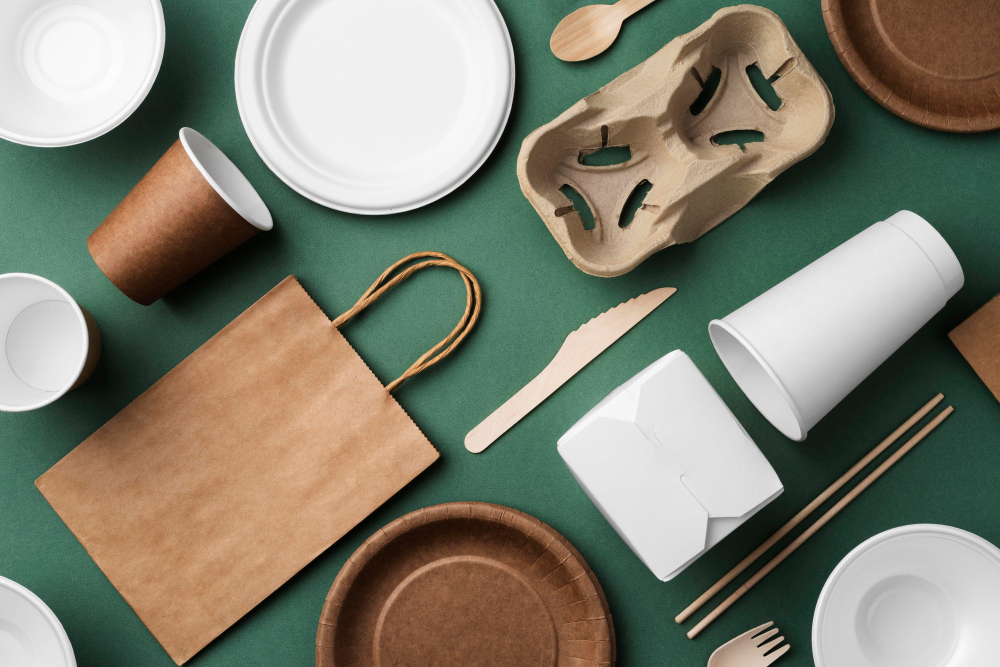In an age where environmental sustainability is paramount, the journey of transforming agricultural waste into eco-friendly plates and bowls stands as a beacon of innovation and hope. These products, crafted from sugarcane bagasse, represent a significant stride in reducing our ecological footprint. Let’s delve into how this remarkable transformation happens, turning waste into a sustainable wonder.
Understanding the Basics: What is Sugarcane Bagasse?
Sugarcane bagasse is the fibrous residue left after extracting juice from sugarcane. Traditionally, this byproduct was considered waste or used as a low-value fuel. However, advancements in material science have unlocked its potential as a raw material for creating biodegradable tableware. The transformation process not only gives this agricultural byproduct a second life but also addresses the pressing need for eco-friendly alternatives to conventional plastic disposables.
Step-by-Step Transformation: From Waste to Eco-Friendly Tableware
1. Collection and Preparation
The journey begins with the collection of sugarcane bagasse from sugar mills. Once collected, the bagasse undergoes thorough cleaning to remove any impurities. This step is crucial to ensure that the final product is safe for food contact and free from contaminants.
2. Pulping Process
Cleaned bagasse is then converted into a pulp through a process that involves adding water and breaking down the fibrous material. This pulping process softens the fibers, making them suitable for molding into various shapes. This pulp forms the base material for producing eco-friendly plates and bowls.
3. Molding and Shaping
The pulp is placed into molds that define the shape and size of the plates and bowls. Through a combination of heat and pressure, the pulp is transformed into sturdy and rigid tableware. The molding process ensures that each piece is uniform in shape and strength, making them practical for everyday use and resistant to breaking.
4. Drying and Finishing
Once molded, the plates and bowls undergo a drying phase to remove any residual moisture. This drying process not only ensures durability but also enhances the product's structural integrity. After drying, the tableware is trimmed and polished to achieve a smooth finish, making it pleasant to touch and visually appealing.
5. Quality Control and Packaging
Quality control is a vital step in the production of eco-friendly tableware. Each piece is inspected to meet strict standards for safety, durability, and aesthetic appeal. After passing quality checks, the plates and bowls are packaged using sustainable materials, ready to be delivered to eco-conscious consumers and businesses.
Environmental Benefits: Why Choose Eco-Friendly Plates & Bowls?
1. Reducing Plastic Pollution
Traditional disposable plates and bowls, often made from plastic, contribute significantly to pollution. They can take hundreds of years to decompose, cluttering landfills and harming marine life. In contrast, sugarcane bagasse plates and bowls are fully biodegradable and compostable, breaking down naturally within a few months. This rapid decomposition helps reduce plastic waste and its adverse environmental impacts.
2. Utilizing Renewable Resources
Using sugarcane bagasse, a renewable resource, to produce tableware promotes a circular economy. By repurposing agricultural waste, we reduce reliance on finite materials and create products that align with principles of sustainability and resource efficiency. This approach also supports the agricultural sector by providing an additional revenue stream from what was once considered waste.
3. Lower Carbon Footprint
The production of eco-friendly plates and bowls from bagasse typically requires less energy compared to traditional plastic manufacturing. Additionally, the composting process releases fewer greenhouse gases than the decomposition of conventional plastics, contributing to a lower overall carbon footprint. This makes sugarcane bagasse tableware a more environmentally friendly option.
Innovative Uses: Beyond Plates and Bowls
While plates and bowls are the most common products, sugarcane bagasse can be molded into various other forms, including trays, cups, and food packaging containers. This versatility extends the benefits of eco-friendly tableware to a broader range of applications, catering to diverse needs in the food service industry. From takeout containers to picnic sets, the possibilities are expansive and growing.
Future Outlook: Expanding the Impact
The market for eco-friendly plates and bowls is rapidly expanding as businesses and consumers alike recognize the importance of sustainable choices. Continued innovation in materials and production processes promises to enhance the quality and functionality of sugarcane bagasse products further. As awareness grows, we can anticipate a shift towards widespread adoption of eco-friendly tableware, paving the way for a greener future.
Conclusion: A Sustainable Solution for a Greener Tomorrow
The transformation of sugarcane bagasse into eco-friendly plates and bowls exemplifies how waste can be converted into a valuable resource. By choosing these products, consumers and businesses contribute to a reduction in plastic pollution, support renewable resource utilization, and promote a sustainable lifestyle. Embracing these innovative solutions is a step towards a more responsible and environmentally conscious way of life. As we move forward, let’s continue to support and celebrate such advancements, making eco-friendly choices a standard in our daily routines.
By integrating the journey from waste to tableware into our understanding, we appreciate not only the products themselves but also the positive environmental impact they represent. Let’s champion eco-friendly plates and bowls and inspire others to make sustainable choices for a better tomorrow.





Comments